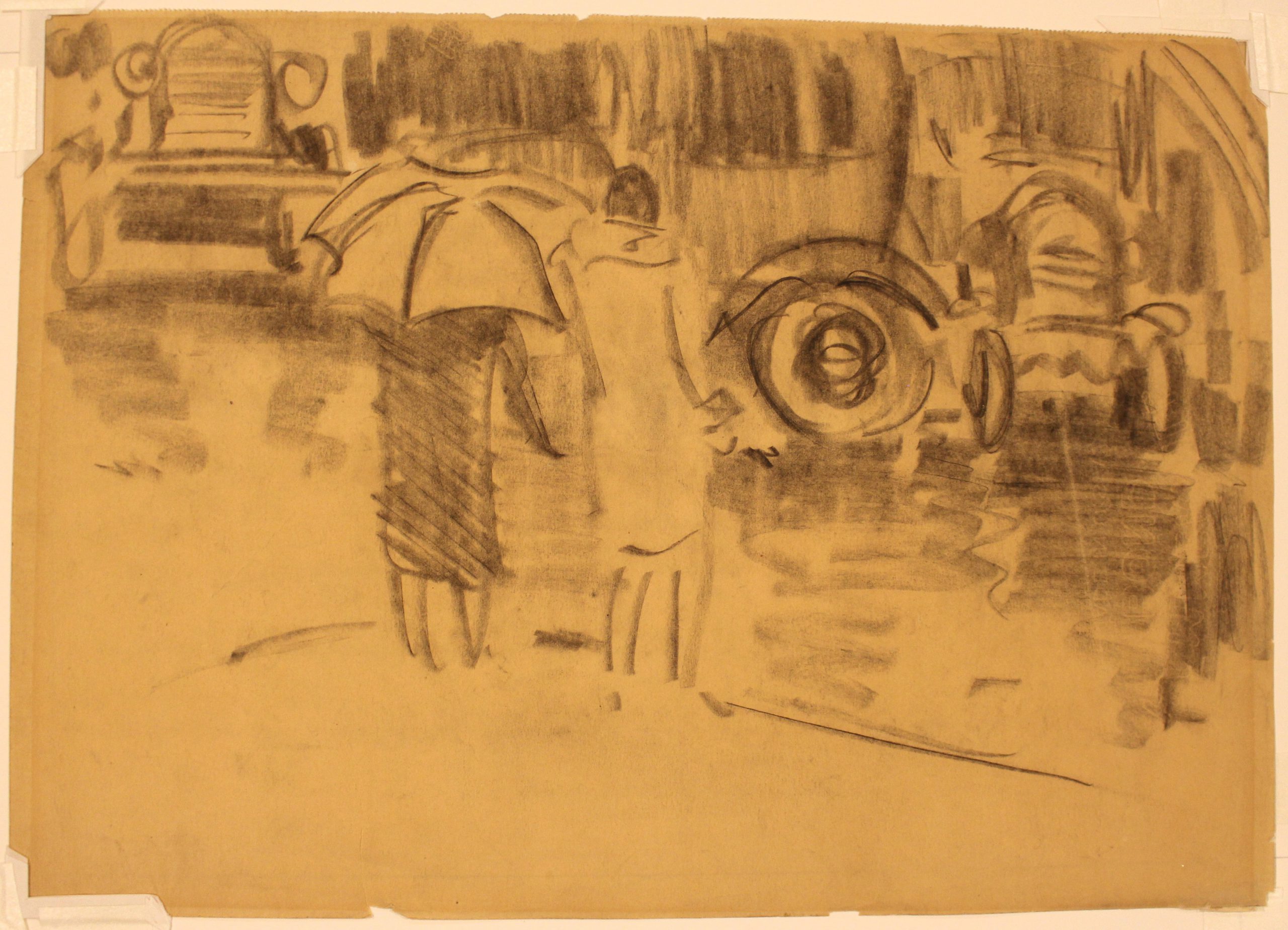Born in Williamsport, Pennsylvania to German immigrant parents, George Luks (1867-1933) was exposed to art at an early age by his mother, who was an amateur painter. Luks briefly studied at the Academy of Fine Arts in Philadelphia in 1884 before leaving the country to travel and study abroad in Berlin, London, and Paris. He did not return to the United States until the early 1890s, and in 1894, he began working as an illustrator for the Philadelphia Press, where he met fellow artists John Sloan, Robert Henri, and William Glackens. In 1896, Luks began working for the New York World in New York City, illustrating news stories as well as comic strips. He also worked for several other publications in the city, drawing political cartoons and on-the-spot sketches of breaking news stories. Luks’s background in cartooning and journalism provided him with an eye for figures and movement and a deep interest in the modern American city. These experiences informed his paintings, which often depicted the modern realities of everyday urban life. Due to its tendency to buck traditional European-centric styles of painting, Luks’s work was not well received by the National Academy of Design, which was the driving force behind modern art tastes in the United States at the time. In protest of the Academy’s stringent exhibition policies, Luks and seven of his peers organized an exhibition of their work at the Macbeth Gallery in 1908. Dubbed “The Eight,” these artists broke free from academic traditions and advocated for freedom from the Academy’s rule, using their work to comment on the role of artists in America and the marketing of art itself. Several of The Eight, including Luks, also belonged to the Ashcan School, a group of artists known for painting gritty scenes of life in New York City. The Ashcan artists typically painted residents of the city’s poorer neighborhoods, showing what life was like for a large portion of the population. For the remainder of his career, Luks painted lower class urban life. He taught at the Art Students League and later founded his own school, where he painted alongside his students. He was known for his unpredictable personality, flashing between good-natured humor and blazes of anger, likely exacerbated by a dependency on alcohol. His excessive drinking gradually took its toll, and in 1933, Luks died from injuries sustained in a late night bar fight. Drawn in 1928, Rainy Day in New York portrays a street scene viewed from the second floor window of the Rehn Gallery at 683 Fifth Avenue. The Rehn Gallery represented Luks from 1925 until his death in 1933, and as such, the surrounding streets would have been a familiar sight and likely subject matter for the artist. This quickly executed sketch shows two women about to cross a busy street at the intersection of 54th Street and Fifth Avenue. With his gestural lines, Luks captured the fast-paced essence of city life. This drawing may have been used as a preliminary sketch for a later painting. Rainy Day in New York is currently on display in Visions of America, on view through August 19, 2018.
-Kali Penoyer, Curatorial Intern, and Steffi Chappell, Curatorial Assistant


